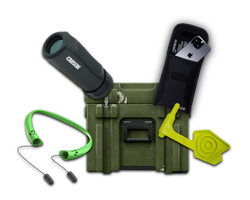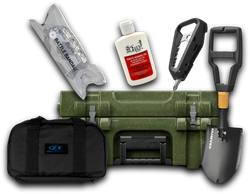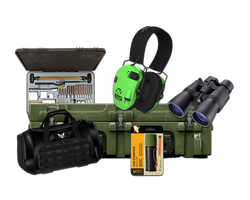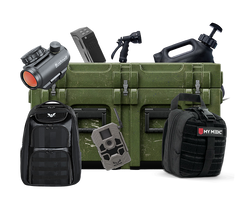How to Pack a Sleeping Bag in a Backpack: The Ultimate Guide
Table of Contents
- Introduction
- Understanding Sleeping Bags
- Preparing Your Backpack for Packing
- How to Pack Your Sleeping Bag
- Maintaining Your Sleeping Bag and Gear
- Conclusion
- FAQ
Introduction
Packing a sleeping bag in a backpack may seem like a straightforward task, but doing it correctly can make a world of difference in your outdoor experience. Have you ever found yourself halfway through a hike, battling with a bulky sleeping bag that just won't fit? Or maybe you've struggled to find your sleeping gear when you need it most at camp. These common frustrations highlight the importance of mastering the art of packing your sleeping bag efficiently.
In this comprehensive guide, you'll learn the best techniques for packing a sleeping bag in a backpack, ensuring you have a smooth and enjoyable outdoor adventure. We will explore the types of sleeping bags available, the role of your backpack in the packing process, and step-by-step instructions to achieve optimal packing. Additionally, we'll discuss the benefits of using high-quality gear from Crate Club, which can enhance your outdoor experience.
By the end of this post, you will be equipped with actionable tips and insights that will empower you to pack like a pro. Let’s dive into the details!
Understanding Sleeping Bags
Types of Sleeping Bags
Before we delve into packing techniques, it’s essential to understand the different types of sleeping bags available. The two primary categories are:
-
Down Sleeping Bags: Known for their lightweight and compressibility, down sleeping bags are filled with duck or goose feathers. They offer excellent insulation and are preferred for their warmth-to-weight ratio. However, they can lose their insulating properties when wet, so proper care is needed.
-
Synthetic Sleeping Bags: Made from polyester fibers, synthetic bags are bulkier than down but perform better in wet conditions. They are generally more affordable and easier to maintain, making them a popular choice for beginners.
Choosing the Right Sleeping Bag for Your Adventure
Selecting the right sleeping bag depends on various factors, including:
-
Weather Conditions: Consider the season and climate where you'll be camping. A three-season sleeping bag is versatile for most conditions, while a four-season bag is suitable for winter.
-
Temperature Rating: Sleeping bags come with temperature ratings indicating the lowest temperature at which the bag will keep you warm. Make sure to choose a bag appropriate for your expected conditions.
-
Weight and Size: If you're planning a long trek, weight becomes a crucial factor. Opt for a lightweight bag that compresses well, making it easier to pack.
Crate Club Products
At Crate Club, you'll find a selection of high-quality sleeping bags designed for various conditions and preferences. Each product is rigorously tested to ensure it meets the demands of outdoor enthusiasts. As a member of Crate Club, you gain access to expert-curated gear that enhances your outdoor experience. To explore our offerings, visit the Crate Club Shop.
Preparing Your Backpack for Packing
Selecting the Right Backpack
Choosing the right backpack for your adventure is crucial. Internal frame backpacks are popular for their support and organization, while external frame backpacks offer increased capacity. When evaluating packs, consider:
-
Volume: A backpack with a capacity of 50 to 70 liters is usually ideal for multi-day trips. Ensure it has enough space for your sleeping bag, tent, food, and other gear.
-
Fit: A well-fitted backpack distributes weight evenly across your body, reducing fatigue. It's essential to try different sizes and styles to find the best fit for you.
Organization of Your Pack
Effective packing starts with organization. Here are some tips to keep your gear in order:
-
Lay Out Your Gear: Before packing, lay out all your items to visualize what you need for your trip. This helps avoid overpacking and ensures you have everything necessary.
-
Identify Packing Zones: Your backpack has different zones for packing. The bottom should accommodate bulkier items like your sleeping bag, while heavier items like food and cooking gear should be placed closer to your back for better weight distribution.
How to Pack Your Sleeping Bag
Step-by-Step Packing Instructions
Now that you're prepared, let’s break down how to pack your sleeping bag effectively:
-
Use a Compression Sack: Start by placing your sleeping bag in a compression sack. This specialized sack reduces the bag's volume, making it easier to pack. Compress the bag as much as possible without damaging the insulation.
-
Positioning the Sleeping Bag: Place the compressed sleeping bag at the bottom of your backpack. This positioning creates a stable base for other items and helps maintain your center of gravity. If your pack has a dedicated sleeping bag compartment, utilize that for added convenience.
-
Fill Gaps: Use lighter items, such as clothing or a sleeping pad, to fill any gaps around the sleeping bag. This maximizes space and keeps your gear from shifting during travel.
-
Secure the Load: Once everything is packed, tighten your backpack’s compression straps. This action secures the load and prevents unnecessary movement while hiking.
Alternative Packing Methods
While the above method is effective, consider these alternatives based on your personal preference and gear setup:
-
Loose Packing: Some adventurers prefer to stuff their sleeping bag loosely at the bottom. This method can work well with down bags, but be cautious about moisture exposure and ensure it has adequate protection.
-
Side Attachment: If you need quick access to your sleeping bag, consider attaching it to the side of your backpack using compression straps. Ensure the weight is balanced on both sides to avoid tipping.
-
External Attachment: For larger sleeping bags, you may opt to attach it externally at the top or bottom of your pack using carabiners or bungee cords. However, be mindful of the potential for snagging on branches or other obstacles.
Maintaining Your Sleeping Bag and Gear
Care for Your Sleeping Bag
Proper maintenance extends the life of your sleeping bag. Here are some essential care tips:
-
Storage: Avoid storing your sleeping bag in its compressed state for long periods. Instead, hang it or store it loosely in a cotton sack to preserve insulation.
-
Cleaning: Follow the manufacturer’s instructions for washing your sleeping bag. Many can be machine-washed on a gentle cycle, but down bags often require more careful handling.
-
Drying: After washing, dry your sleeping bag thoroughly to prevent mold. Use dryer balls to help maintain its loft during the drying process.
Other Essential Gear
Investing in high-quality gear can enhance your outdoor experience. Crate Club offers a wide array of essential items, such as tents, cooking gear, and survival tools, all designed for durability and reliability in the field. For more information, check out our Crate Club Subscription Services for curated tactical gear delivered monthly.
Conclusion
Packing a sleeping bag in a backpack may seem simple, but mastering the technique can significantly impact your outdoor experience. By understanding your gear, organizing your pack effectively, and employing the right packing methods, you can embark on your adventures with confidence and ease.
Utilizing quality gear from Crate Club can elevate your preparedness, ensuring you’re equipped for any situation. Remember, the journey is just as important as the destination, and with these tips, you’ll be well on your way to enjoying the great outdoors.
Now that you're equipped with all the knowledge needed, it's time to hit the trails and experience the beauty of nature. Happy hiking!
FAQ
How do I choose the right sleeping bag for my trip?
Choosing the right sleeping bag depends on the weather conditions, temperature ratings, size, and weight. Consider these factors based on your planned activities and environment.
Can I pack my sleeping bag without a compression sack?
Yes, you can pack it loosely or use other bags, but a compression sack is recommended for more compact storage and organization.
Where is the best place to pack my sleeping bag in the backpack?
The bottom of the backpack is recommended for stability, but you can also consider side or external attachment for quick access.
How often should I clean my sleeping bag?
Only clean your sleeping bag as needed, typically after several trips or if it becomes soiled. Always follow the manufacturer's care instructions.
What if my sleeping bag gets wet?
If your sleeping bag gets wet, dry it thoroughly as soon as possible. If you're in the field, use a camp dryer or hang it in a sheltered area. Always pack it in a waterproof sack if you're expecting rain.
Can I attach multiple items to my backpack along with a sleeping bag?
Yes, but ensure that the total weight is balanced and secure to maintain comfort and stability during your hike.
Share this article



